3-甲基-4-硝基吡啶, ≥99%,3-Methyl-4-Nitropyridine
产品编号:西域试剂-WR177293| CAS NO:1678-53-1| 分子式:C6H6N2O2| 分子量:138.12
本网站销售的所有产品仅用于工业应用或者科学研究等非医疗目的,不可用于人类或动物的临床诊断或者治疗,非药用,非食用,
| 英文名称 | 3-Methyl-4-Nitropyridine |
|---|---|
| CAS编号 | 1678-53-1 |
| 产品熔点 | 246 °C |
| 产品沸点 | 244.2±20.0 °C at 760 mmHg |
| 产品密度 | 1.2±0.1 g/cm3 |
| 产品闪点 | 101.5±21.8 °C |
| 精确质量 | 138.042923 |
| PSA | 58.71000 |
| LogP | 0.79 |
| 外观性状 | 淡黄色粉末 |
| 蒸气压 | 0.0±0.5 mmHg at 25°C |
| 折射率 | 1.558 |
| 溶解性 | 0.02 g/100 mL (20 ºC) |
相关文档
化学品安全说明书(MSDS)
下载MSDS质检证书(COA)
相关产品
| 危害码 (欧洲) | Xn |
|---|---|
| 风险声明 (欧洲) | R10:Flammable. R22:Harmful if swallowed. |
| 安全声明 (欧洲) | S13-S25-S46 |
| 危险品运输编码 | 1332 |
| RTECS号 | XF9900000 |
| 包装等级 | III |
| 危险类别 | 4.1 |
| 海关编码 | 2933399090 |
Synonym:3-Methyl-4-nitropyridin Section 2 - COMPOSITION, INFORMATION ON INGREDIENTS
Risk Phrases: 21/22 36/37/38 Section 3 - HAZARDS IDENTIFICATION EMERGENCY OVERVIEW
Harmful in contact with skin and if swallowed. Irritating to eyes, respiratory system and skin. Potential Health Effects Eye: Causes eye irritation. Skin: Causes skin irritation. Harmful if absorbed through the skin. Ingestion: Harmful if swallowed. May cause irritation of the digestive tract. Inhalation: Causes respiratory tract irritation. May be harmful if inhaled. Chronic: Not available. Section 4 - FIRST AID MEASURES Eyes: Flush eyes with plenty of water for at least 15 minutes, occasionally lifting the upper and lower eyelids. Get medical aid. Skin: Get medical aid. Flush skin with plenty of water for at least 15 minutes while removing contaminated clothing and shoes. Ingestion: Get medical aid. Wash mouth out with water. Inhalation: Remove from exposure and move to fresh air immediately. If not breathing, give artificial respiration. If breathing is difficult, give oxygen. Get medical aid. Notes to Physician: Treat symptomatically and supportively. Section 5 - FIRE FIGHTING MEASURES General Information: As in any fire, wear a self-contained breathing apparatus in pressure-demand, MSHA/NIOSH (approved or equivalent), and full protective gear. Extinguishing Media: Use water spray, dry chemical, carbon dioxide, or chemical foam. Section 6 - ACCIDENTAL RELEASE MEASURES General Information: Use proper personal protective equipment as indicated in Section 8. Spills/Leaks: Vacuum or sweep up material and place into a suitable disposal container. Section 7 - HANDLING and STORAGE Handling: Avoid breathing dust, vapor, mist, or gas. Avoid contact with skin and eyes. Storage: Store in a cool, dry place. Store in a tightly closed container. Section 8 - EXPOSURE CONTROLS, PERSONAL PROTECTION Engineering Controls: Facilities storing or utilizing this material should be equipped with an eyewash facility and a safety shower. Use adequate ventilation to keep airborne concentrations low. Exposure Limits CAS# 1678-53-1: Personal Protective Equipment Eyes: Not available. Skin: Wear appropriate protective gloves to prevent skin exposure. Clothing: Wear appropriate protective clothing to prevent skin exposure. Respirators: Follow the OSHA respirator regulations found in 29 CFR 1910.134 or European Standard EN 149. Use a NIOSH/MSHA or European Standard EN 149 approved respirator if exposure limits are exceeded or if irritation or other symptoms are experienced. Section 9 - PHYSICAL AND CHEMICAL PROPERTIES Physical State: Powder Color: cream Odor: Not available. pH: Not available. Vapor Pressure: Not available. Viscosity: Not available. Boiling Point: Not available. Freezing/Melting Point: Not available. Autoignition Temperature: Not available. Flash Point: Not available. Explosion Limits, lower: Not available. Explosion Limits, upper: Not available. Decomposition Temperature: Solubility in water: Specific Gravity/Density: Molecular Formula: C6H6N2O2 Molecular Weight: 138.12 Section 10 - STABILITY AND REACTIVITY Chemical Stability: Stable under normal temperatures and pressures. Conditions to Avoid: Incompatible materials. Incompatibilities with Other Materials: Strong oxidizing agents, acids, acid chlorides, acid anhydrides. Hazardous Decomposition Products: Nitrogen oxides, carbon monoxide, carbon dioxide. Hazardous Polymerization: Will not occur. Section 11 - TOXICOLOGICAL INFORMATION RTECS#: CAS# 1678-53-1 unlisted. LD50/LC50: Not available. Carcinogenicity: 4-Nitro-3-picoline - Not listed by ACGIH, IARC, or NTP. Section 12 - ECOLOGICAL INFORMATION Section 13 - DISPOSAL CONSIDERATIONS Dispose of in a manner consistent with federal, state, and local regulations. Section 14 - TRANSPORT INFORMATION IATA Shipping Name: Not regulated. Hazard Class: UN Number: Packing Group: IMO Shipping Name: Not regulated. Hazard Class: UN Number: Packing Group: RID/ADR Shipping Name: Not regulated. Hazard Class: UN Number: Packing group: Section 15 - REGULATORY INFORMATION European/International Regulations European Labeling in Accordance with EC Directives Hazard Symbols: XN Risk Phrases: R 21/22 Harmful in contact with skin and if swallowed. R 36/37/38 Irritating to eyes, respiratory system and skin. Safety Phrases: S 26 In case of contact with eyes, rinse immediately with plenty of water and seek medical advice. S 36/37/39 Wear suitable protective clothing, gloves and eye/face protection. WGK (Water Danger/Protection) CAS# 1678-53-1: No information available. Canada None of the chemicals in this product are listed on the DSL/NDSL list. CAS# 1678-53-1 is not listed on Canada's Ingredient Disclosure List. US FEDERAL TSCA CAS# 1678-53-1 is not listed on the TSCA inventory. It is for research and development use only. SECTION 16 - ADDITIONAL INFORMATION N/A |
|
~83% 
1678-53-1 |
| 文献:Dormoy, Jean-Robert; Heymes, Alain Tetrahedron, 1993 , vol. 49, # 14 p. 2885 - 2914 |
|
~% 
1678-53-1 |
| 文献:Journal of Organometallic Chemistry, , vol. 517, # 1-2 p. 25 - 36 |
|
~% 
1678-53-1 |
| 文献:Journal of the American Chemical Society, , vol. 76, p. 3167 |
| 上游产品 3 | |
|---|---|
| 下游产品 7 | |

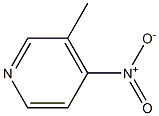
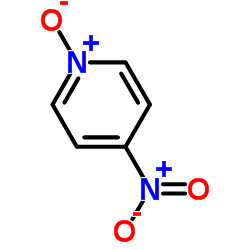

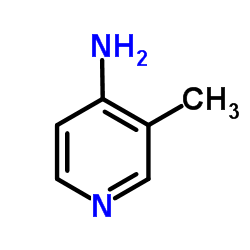
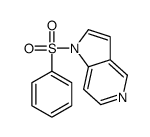
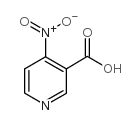
![1H-吡咯并[3,2-c]吡啶结构式](/20230522/271-34-1.png)
![1-Boc-1H-吡咯并[3,2-c]吡啶结构式](/20230522/148760-75-2.png)
![1-(苯基磺酰基)-1H-吡咯并[3,2-c]吡啶-2-甲醛结构式](/20230522/109113-44-2.png)
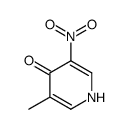





 浙公网安备 33010802013016号
浙公网安备 33010802013016号